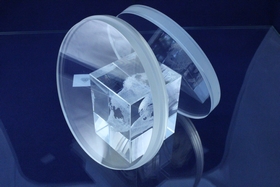
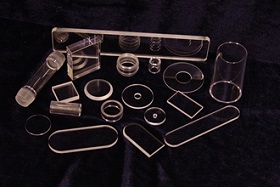
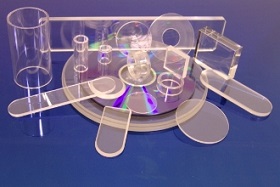
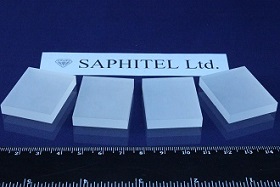
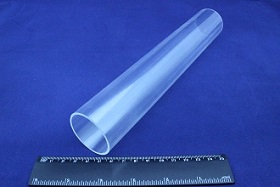
Synthetic sapphire is transparent single crystal 99.99% pure Al2O3 that exhibits a unique combination of physical, chemical, electrical and optical properties: high thermal conductivity, high strength and scratch resistance, hardness (9 on the Mohs scale), transparent in wide range of wavelength, chemical inertness. High crystal perfection, low reactivity, and appropriate unit cell size make sapphire an excellent substrate in the semiconductor industry for blue light-emitting diodes (LED). Since Nobel Laureate in Physics Shuji Nakamura used the sapphire substrate in 1990s for LED, the demand of sapphire crystal has been growing rapidly.
It drives development of new markets like general lighting, backside lighting in TV-sets, displays, consumer appliances, aerospace and defense, and other applications
| Physical | |
| Chemical formula | Al2O3 |
| Density | 3.97 g/cm3 |
| Hardness | 9 Mohs |
| Melting point | 2050oC |
| Max. use temperature | 1800-1900oC |
| Mechanical | |
| Tensile strength | 250-400 MPa |
| Compressive strength | 2000 MPa |
| Poisson's ratio | 0.25-0.30 |
| Young's Modulus | 350-400 GPa |
| Bending strength | 450-860 MPa |
| Rapture Modulus | 350-690 MPa |
| Thermal | |
| Linear expansion rate (at 293-323 K) | 5.0*10-6K-1(⊥ C) |
| 6.6*10-6K-1(∥ C) | |
| Thermal conductivity (at 298 K) | 30.3 W/(m*K)(⊥ C) |
| 32.5 W/(m*K)(∥ C) | |
| Specific heat (at 298 K) | 0.10 cal*g-1 |
| Electrical | |
| Resistivity (at 298 K) | 5.0*1018 Ω*cm(⊥ C) |
| 1.3-2.9*1019 Ω*cm(∥ C) | |
| Dielectric constant (at 298 K, in 103-109 Hz interval) | 9.3 (⊥ C) |
| 11.5 (∥ C) | |